India Textile Industry Impact Calculator
Input Key Factors
Adjust values to see how they impact the textile industry's performance
When you hear Indian textile industry is a massive sector that includes everything from cotton farms to high‑tech garment factories across the sub‑continent, you probably picture a mix of old‑fashioned looms and shiny new automation lines. The reality in 2025 is both familiar and surprising - the sector has grown, shrunk, and reinvented itself all at once.
- Production value crossed US$ 220 billion, led by cotton and man‑made fibers.
- Exports fell 8 % last year, but niche markets like technical textiles are booming.
- Government schemes such as "Make in India - Textile" and new GST rules are reshaping profit margins.
- Labor shortages and rising energy costs remain the biggest headwinds.
- Sustainability investment is shifting from compliance to market differentiation.
Production Landscape in 2025
India harvested about 38 million tonnes of cotton in the 2024‑25 season, a slight dip from the previous year due to erratic monsoons. Still, cotton accounts for roughly 55 % of raw material use in the sector. Man‑made fibers (viscose, polyester, nylon) filled the gap, growing at a 6 % annual rate driven by demand for affordable apparel and technical fabrics.
Spinning capacity now stands at 38 million kg per month, with yarn output concentrated in Gujarat, Tamil Nadu and Maharashtra. These three states alone host over 60 % of the nation’s spinning mills, many of which have upgraded to compact‑ring technology that reduces waste by up to 15 %.
Fabric - both woven and knitted - follows a similar regional pattern. Gujarat’s Surat remains the world’s largest hub for synthetic fabrics, while Tamil Nadu’s Tirupur continues to dominate knitted garment production. The rise of “fabric‑as‑a‑service” platforms is allowing small designers to order short‑run, high‑quality cloth without owning a loom.
Export Performance and Market Shifts
In FY 2024‑25, textile exports fell to US$ 32 billion, an 8 % decline from the previous fiscal year. The drop is mainly linked to weaker demand in the United States and Europe, as well as tighter trade rules in the EU’s textile quota system. On the bright side, technical textiles - think automotive composites, medical gowns and geotextiles - grew 14 % and now represent almost 12 % of total export value.
Key destinations remain the United States, United Arab Emirates, Bangladesh and the United Kingdom. The United Kingdom’s post‑Brexit trade agreement has opened a modest but steady stream of high‑value, sustainable‑fashion exports, especially from the South Indian cluster.
Domestic consumption, however, is holding the fort. Rising disposable incomes in tier‑2 cities and a surge in online apparel shopping have kept internal demand robust, offsetting some export weakness.
Government Policies Shaping the Sector
The "Make in India - Textile" initiative, launched in 2023, promised a US$ 3 billion infusion for modernising mills, building textile parks, and upskilling workers. By early 2025, ten new parks are operational, offering shared utilities, R&D labs, and single‑window clearances for export documentation.
GST reforms introduced a uniform 5 % rate for most finished garments, simplifying compliance for exporters but squeezing margins for small producers who previously enjoyed a lower tax bracket. The government also rolled out a 15 % cash‑back scheme on capital equipment purchases, encouraging firms to adopt AI‑driven quality control and IoT‑based energy monitoring.
On the sustainability front, the Ministry of Textiles set a target of 30 % recycled fiber usage by 2030. Several state-sponsored grant programs now fund pilot projects for water‑less dyeing and bio‑based polymers.
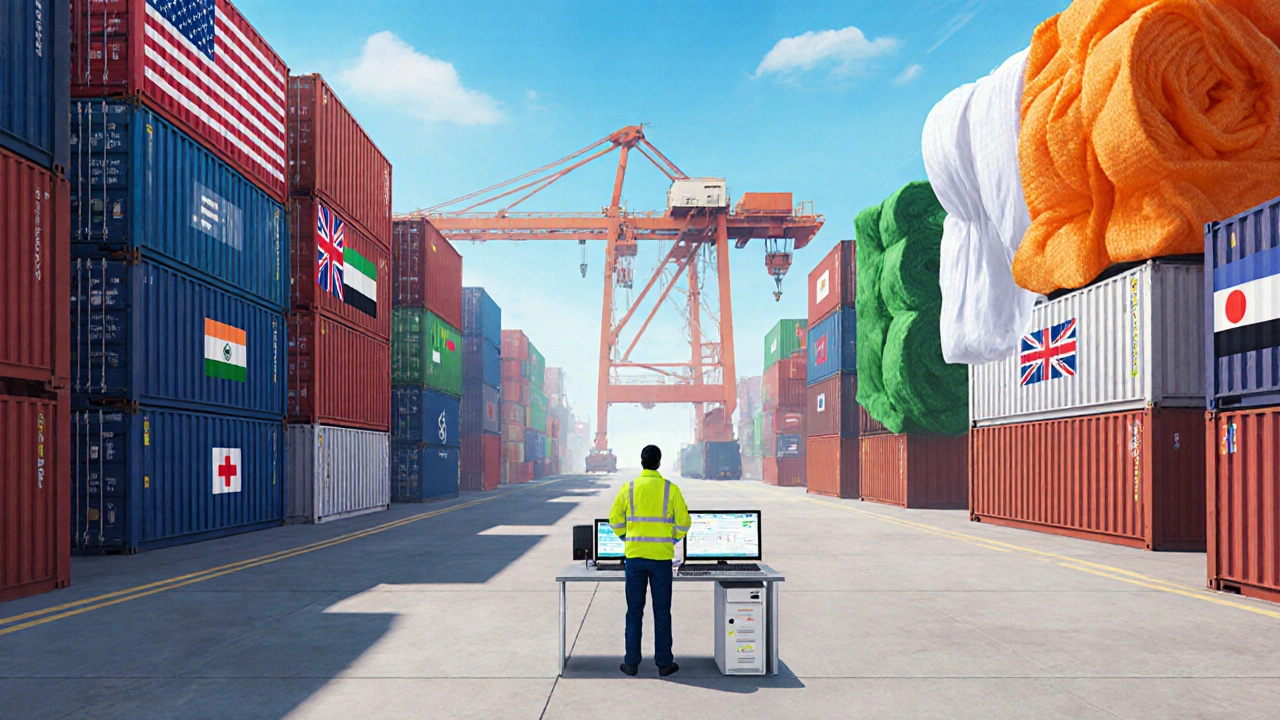
Key Challenges: Labor, Energy, and Raw Material
Labor shortages have become acute in traditional hubs. Younger workers prefer IT or services jobs, leaving factories to compete for an aging workforce. Wage pressures have risen by about 9 % over the last two years, squeezing already thin profit margins.
Energy costs are another pain point. Coal‑based power remains cheap in many regions, but stricter environmental norms are pushing firms toward higher‑priced renewable sources. The average electricity price for textile units climbed to ₹ 9 per kWh in 2025, up from ₹ 7 the year before.
Raw material volatility adds a third layer of risk. Cotton prices spiked to US$ 1.20 per pound in late 2024 due to global supply chain disruptions, while polyester feedstock saw a 12 % price hike after a major refinery outage in the Middle East.
Technology Adoption and Innovation
Automation is no longer a buzzword - it’s a survival tool. Over 40 % of large‑scale spinning mills now use AI‑driven yarn quality monitoring, reducing defect rates from 3 % to under 1 %.
Digital twins of entire garment factories are being piloted in Gujarat’s textile park. These twins simulate production flows, helping managers optimise scheduling and cut lead times by 20 %.
Blockchain for traceability has gained traction after several European buyers demanded proof of ethical sourcing. A consortium of Indian exporters uses a shared ledger to record cotton origin, water usage and carbon footprint, giving buyers a transparent view of the supply chain.

Sustainability: From Compliance to Competitive Edge
Eco‑friendly fabrics are moving from niche to mainstream. Organic cotton now accounts for 7 % of total cotton cultivated, up from 3 % in 2020. Companies like Raymond and Arvind have launched lines made from recycled polyester, marketed as "green premium" collections.
Water‑less dyeing technologies, pioneered by a Pune‑based startup, claim up to 90 % water savings and have been adopted by three major garment exporters. The adoption rate is still low - only about 12 % of dye houses use these methods - but demand is rising as global brands tighten their sustainability clauses.
Waste management is improving too. Textile waste-to-energy plants in Andhra Pradesh now convert 25 % of post‑fabric scraps into electricity, feeding back into nearby industrial parks.
Future Outlook: Scenarios for 2026‑2030
If current trends hold, the sector could reach a production value of US$ 250 billion by 2030, driven mainly by technical textiles and sustainable fabrics. However, three scenarios could shift that trajectory:
- Optimistic: Faster adoption of automation reduces labor costs, renewable energy subsidies lower power bills, and export markets rebound after the EU relaxes quotas.
- Base: Gradual growth continues, with modest gains in high‑value segments offset by steady raw‑material price pressure.
- Pessimistic: Severe water scarcity hampers cotton output, and global protectionism curtails export volumes, leading to a stagnating market.
Stakeholders - from mill owners to policy makers - need to keep an eye on these variables. Investing in skill development, renewable energy, and R&D for sustainable fibers will likely pay off regardless of which scenario unfolds.
Key Takeaway
Indian textile industry stands at a crossroads where traditional scale meets modern innovation. Its ability to balance growth, sustainability, and competitiveness will define the next decade.
| State | Key City | Annual Output (billion USD) | Employment (million) | Specialty |
|---|---|---|---|---|
| Gujarat | Surat | 75 | 2.4 | Synthetic fabrics, Yarn |
| Tamil Nadu | Tirupur | 62 | 2.1 | Knitted garments, Technical textiles |
| Maharashtra | Nagpur | 48 | 1.6 | Cotton fabrics, Apparel |
Why did India’s textile exports decline in 2025?
Exports slipped mainly because of weaker demand in the United States and Europe, tighter EU quota restrictions, and a short‑term dip in cotton prices that made Indian yarn less price‑competitive.
What are the biggest growth areas for Indian textiles?
Technical textiles, sustainable fabrics (organic cotton, recycled polyester), and digital‑enabled short‑run production are the fastest‑growing segments, all expected to outpace traditional apparel.
How does the Make in India - Textile scheme help manufacturers?
The scheme offers up to US$ 3 billion in subsidies for modern equipment, tax breaks for setting up in textile parks, and skill‑development grants, all aimed at boosting competitiveness and attracting foreign investment.
What challenges do labor and energy pose for the sector?
A shrinking young workforce forces higher wages, while rising electricity costs - now around ₹ 9 per kWh - erode profit margins, especially for energy‑intensive processing like dyeing.
Are Indian textile firms adopting sustainable practices?
Yes. More than half of large exporters use some form of water‑less dyeing, about 7 % of cotton is organic, and waste‑to‑energy plants now handle a quarter of fabric scrap in key regions.


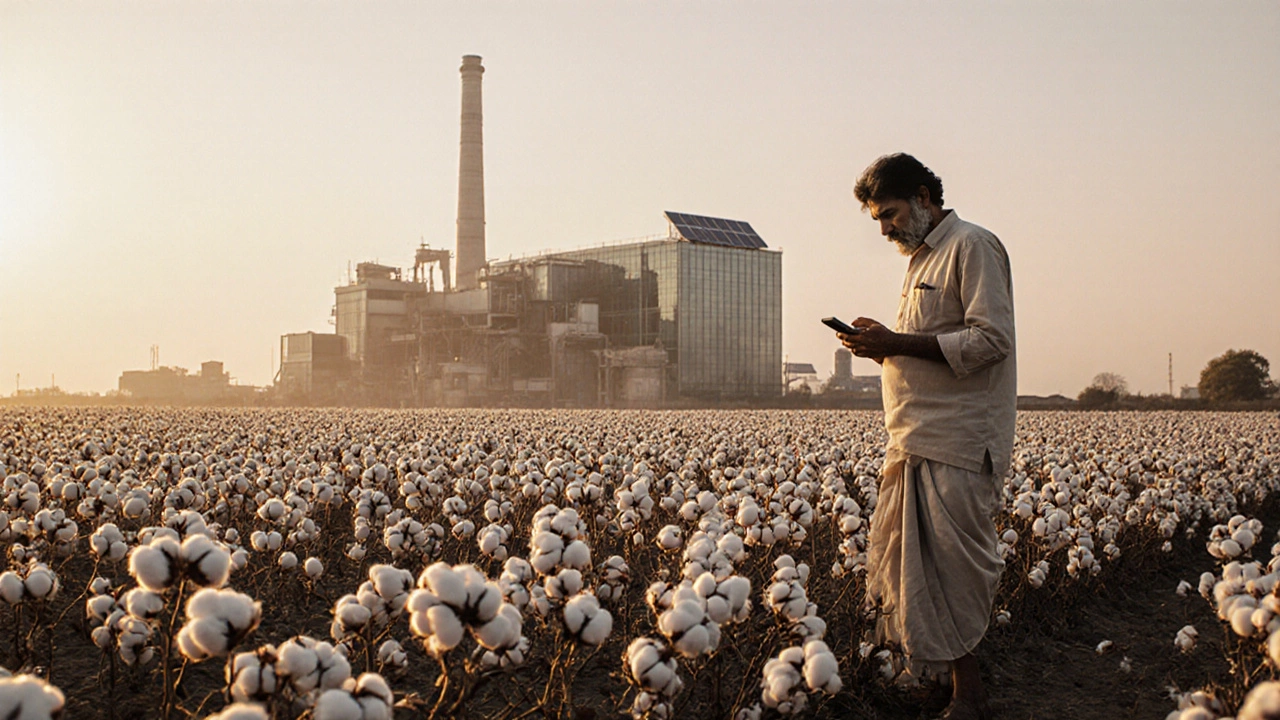


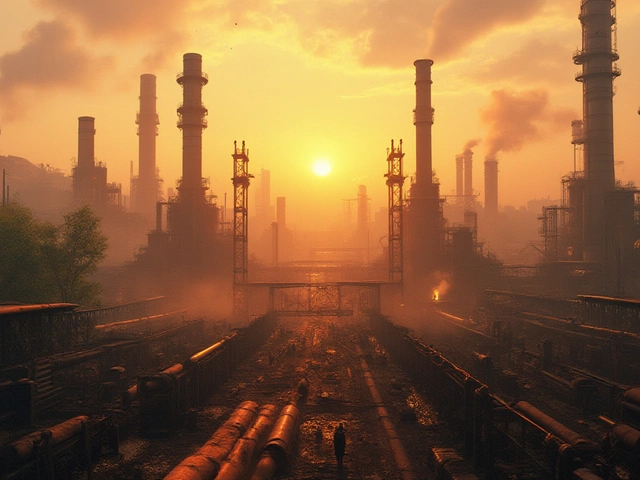

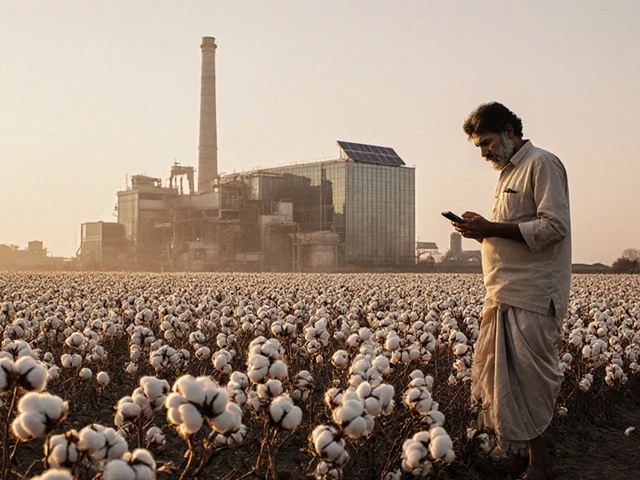
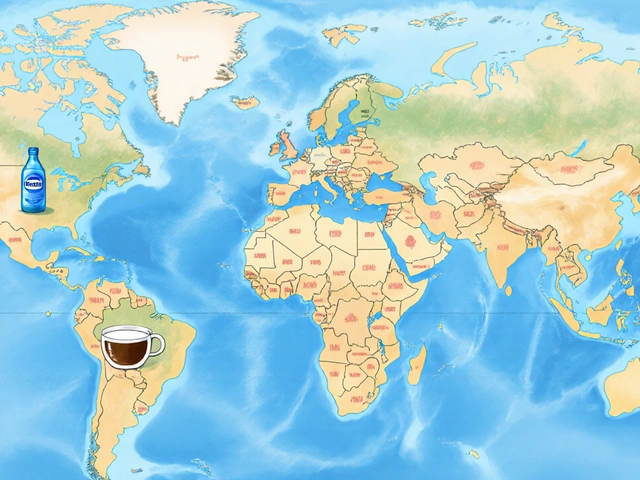
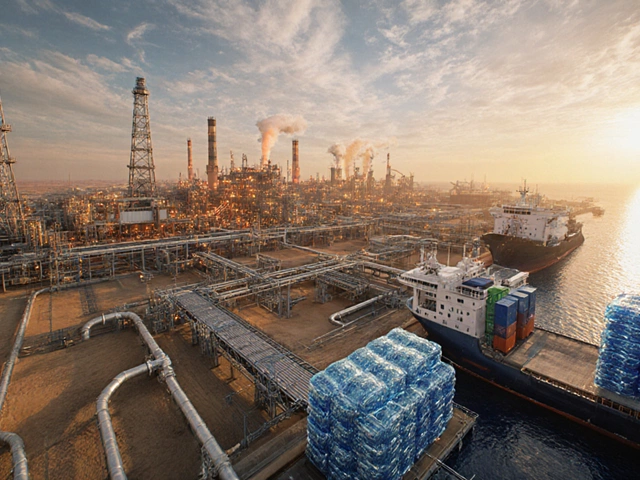
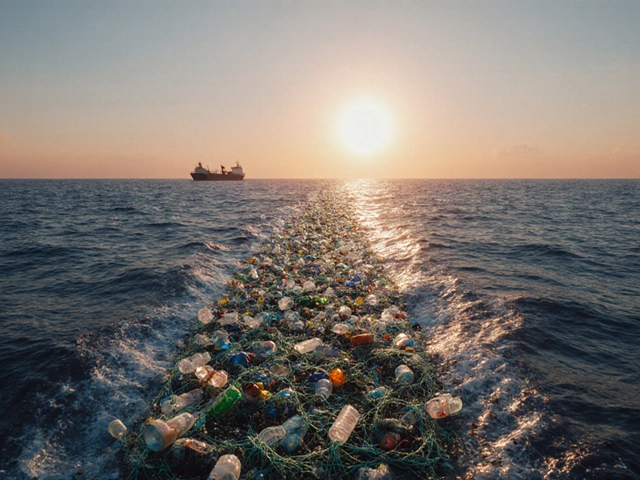
Write a comment